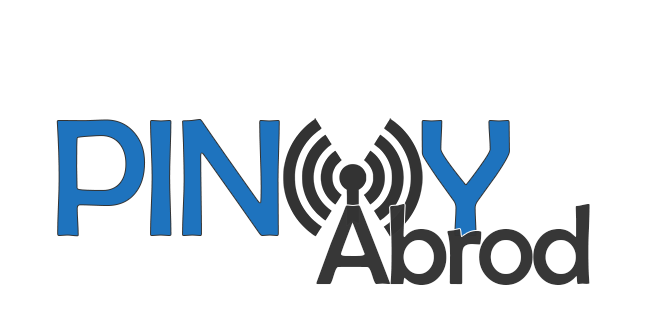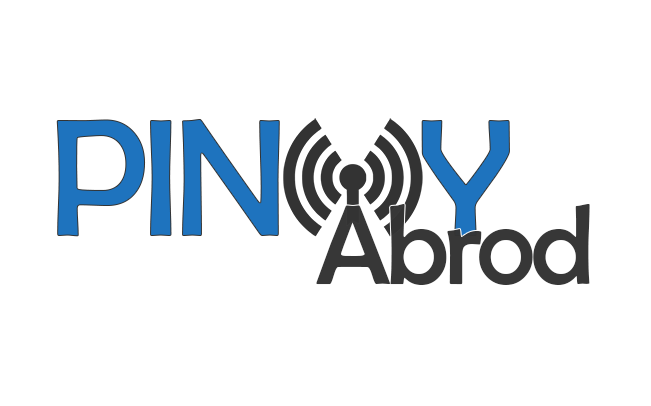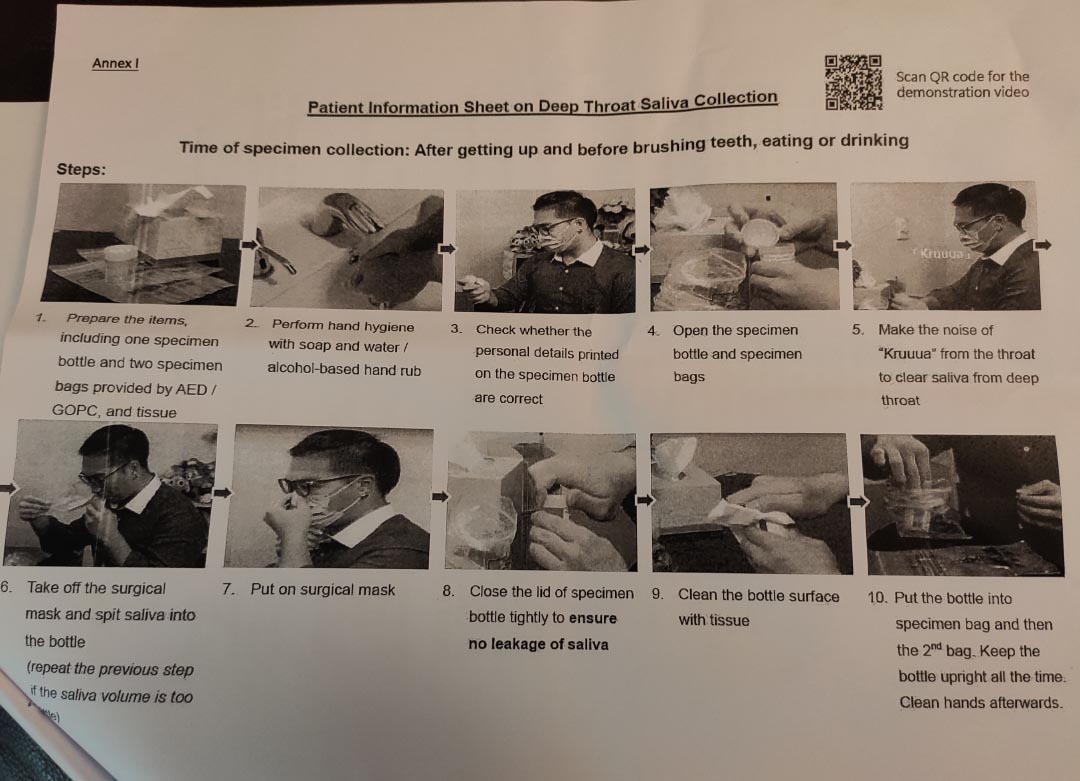I am now able to process this, thinking I am lucky to be able to have myself tested, as scores of Filipinos struggle with symptoms while ensuring that they will still have something to eat. But is it all luck? Is it just my luck to live in a territory with satisfactory practices in dealing with a pandemic? And what of it? What of the millions of Filipinos dealing with the pandemic on their own, with barely any government support? Is it their luck to die miserably, alone?
By TRINA FEDERIS
Bulatlat.com
 HONG KONG — I am a Filipino in Hong Kong and I got tested for COVID-19.
HONG KONG — I am a Filipino in Hong Kong and I got tested for COVID-19.
I wasn’t feeling well Sunday afternoon. Since my symptoms worsened Monday morning, I called up a private clinic for an appointment. I was asked to come in later in the day. That afternoon, I went to the clinic. Before entering the premises, my temperature was taken with an ear thermometer. I was also requested to answer a form, which asked me if I had COVID-19 symptoms, and if I or anyone in my household traveled out of Hong Kong in the past 14 days. I applied some sanitizer that was on the station before entering the clinic.
Once inside, I gave the form to the receptionist. The clinic had a few people waiting for their turn. It wasn’t long before I was asked to approach one of the numbered doors to talk to a doctor.
I spoke to a very polite doctor. She reviewed my medical history and then asked me how I was feeling. I told her that I had a runny nose, headache, and chills. But no sore throat, I added.
She then mentioned about testing for COVID-19. She also said, in the same breath, about me ‘highly unlikely’ testing positive for it, since I had no recent travel history. But it got me thinking about community transmission and all those asymptomatic cases. I come into contact with people who are immunocompromised and have pre-existing conditions. I could be a carrier, for all we know. What’s the worst that can happen? If I take the test and I test positive, I just have to self-quarantine at home. If I get worse, I will be brought to a hospital or some other government facility. And the testing is free. I only need to pay for the handling fee of HK$100 (US$12.90 or Php654.84). If I don’t take the test, there’s always the fear that I am a carrier and I will endanger those around me.
The doctor was actually surprised when I said I wanted to push through with the test. She did tell me though that if I would test positive, I will receive a call the same day I brought in a saliva sample for testing. If not, I will receive a call in one or two days. After being led out of the doctor’s consultation room, a nurse talked to me. She gave me a bottle and two resealable plastic bags with the hazard symbol printed on them. She gave simple instructions: Expel deep throat saliva into the bottle first thing in the morning. Close the bottle tightly. Wipe the surface of the bottle. Place inside the smaller bag and seal, before placing inside the other bag and sealing it. Keep it upright. Bring it to the nearest government clinic. She also gave a sheaf of papers, which included instructions on how to place the specimen inside the bottle. I was also given four types of medicine, good for three days. The medicine costs HK$25 (US$3.23 or Php163.71).
I brought the specimen to the government clinic Tuesday morning. I received a call Wednesday afternoon, still disoriented from being woken up from an illness-induced nap. I tested ‘normal’, or negative for the COVID-19 virus.
It was painless, really. I didn’t even exert any effort in searching how I can get tested because the test was served to me on a silver platter. I remembered my friend in the Philippines who couldn’t get tested even if she had almost all the symptoms. She was merely classified as a person under monitoring (PUM), because she can still breathe without difficulty. She’s very worried as she has a baby and parents who are already senior citizens. I remembered too that there’s no chance she will be tested now, as a PUM, since the Philippine Department of Health reclassified the people under these categories.
As of this writing, Hong Kong has 1,033 COVID-19 cases, with four deaths. We are currently not under lockdown. What the Hong Kong government did is enforce social distancing (no more than four people in a group and one and a half meters from the other groups), partially close borders, limit the inflow of people from overseas, and widen the scope of testing. More quarantine facilities have been opened.
In the first stages of the pandemic, the Hong Kong government, like many other governments, only acted after the people made demands. It was only after protests and complaints that it partially shut down borders, provided quarantine facilities, widened the scope of testing, etc. Probably still reeling from the effects of the protests that started in the summer of 2019, they somewhat listened. And they do have the experience, if you recall the SARS epidemic of the early 2000s. Hong Kong also spent 14 percent of its total public expenditure in 2019 for health services. But there is still much to be done, as significant segments of Hong Kong society are excluded from these measures. These include migrant domestic workers, who bear with the crisis with no government support in the form of financial aid.
Hong Kong’s healthcare system is not perfect, but it is better than the Philippines’, which is an abysmal class of its own. I am now able to process this, thinking I am lucky to be able to have myself tested, as scores of Filipinos struggle with symptoms while ensuring that they will still have something to eat. But is it all luck? Is it just my luck to live in a territory with satisfactory practices in dealing with a pandemic? And what of it? What of the millions of Filipinos dealing with the pandemic on their own, with barely any government support? Is it their luck to die miserably, alone?
A passage from an old lesson resurfaces in my memory. “I will not return to a universe/of objects that don’t know each other,/as if islands were not the lost children/of one great continent.” (Monet Refuses the Operation, Lisel Mueller) In the poem, Impressionist painter Monet explains to his doctor why he refuses to have an operation to remove the cataracts because these have transformed his view, now seeing that “The world/is flux…” I am reminded of this passage because the pandemic has changed many people’s views of the world.
With this pandemic, do we really want to keep on believing that we can live in tiny kingdoms composed of only our families? Do we really want to live in a world where we remain safe inside our homes, while people who risk their lives outside for us are left without protection by the government?
We have seen courageous acts of individuals and organizations banding together to help the needy outside of their communities. Surely, we can see that the Philippine government can do so much more if only it can get its act together. Surely we can altogether demand that free mass testing be provided. Surely we can tell the government that a military approach is not the life-saving response to a health crisis.
We need not return to a broken world. We can turn to the root causes of the problem, the radix. This is called the radical approach. May we see what needs to be done.
The post First Person | The virus of a broken world appeared first on Bulatlat.



